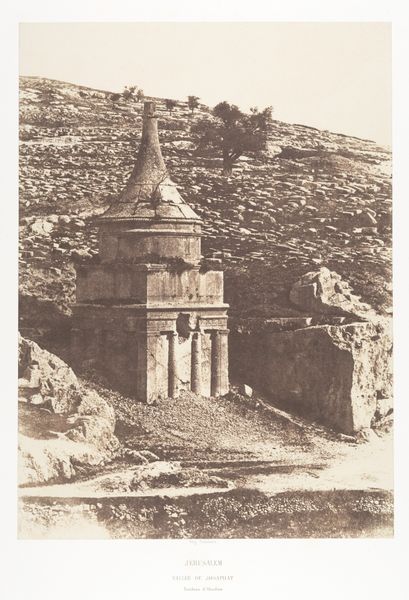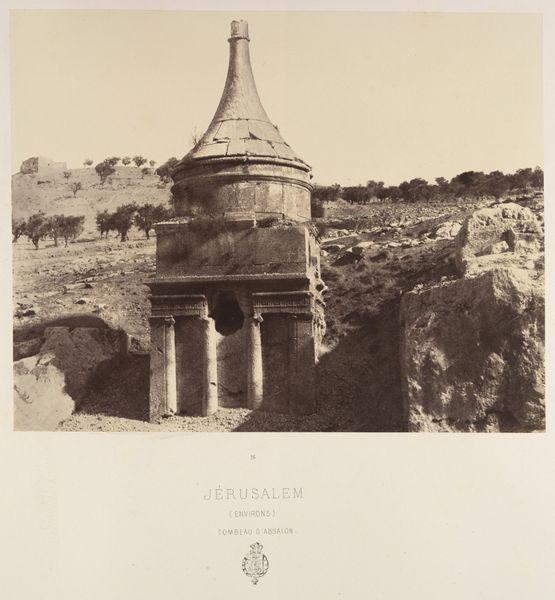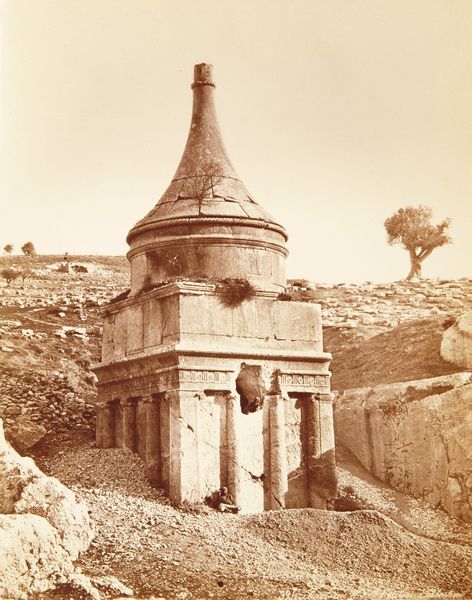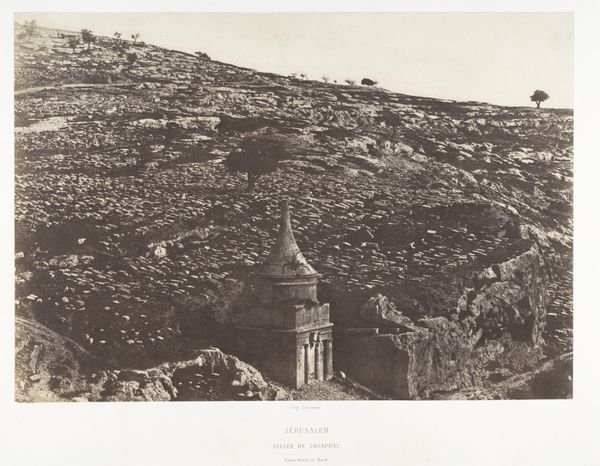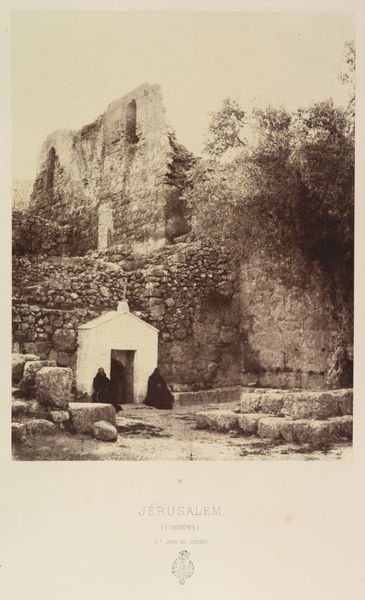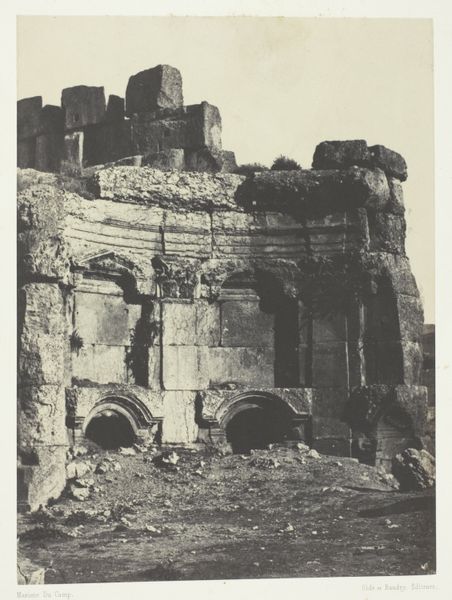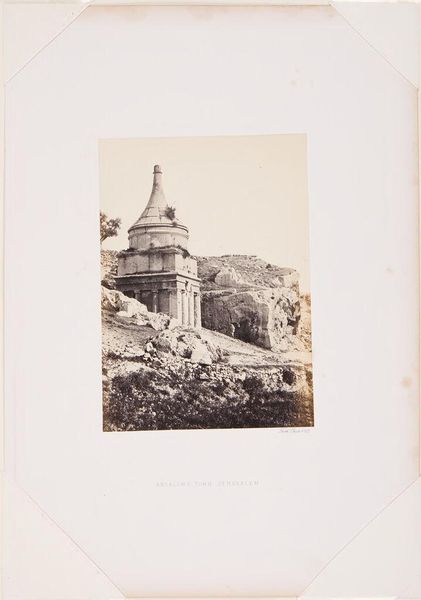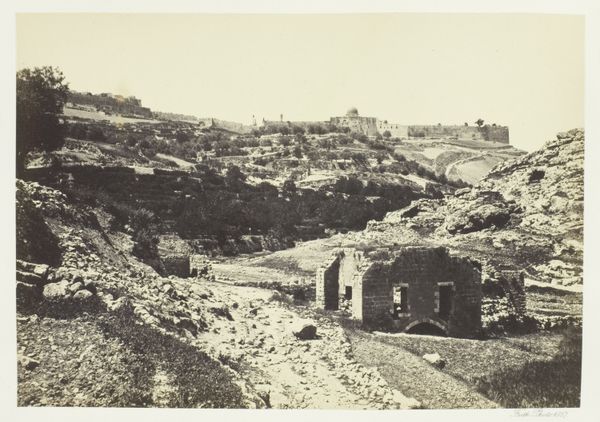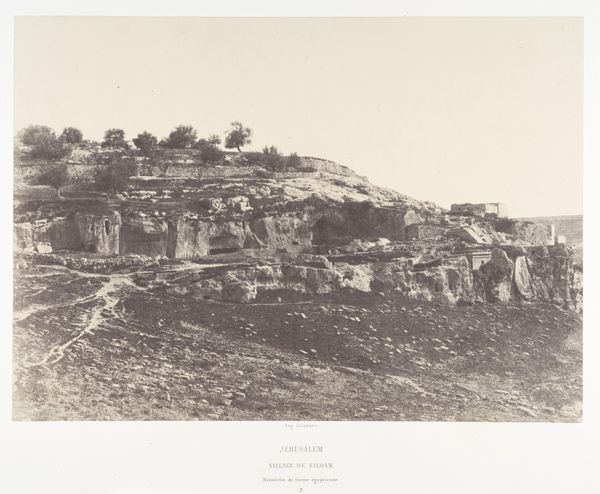
print, daguerreotype, photography
#
16_19th-century
# print
#
landscape
#
daguerreotype
#
photography
#
orientalism
#
realism
Dimensions: 21.6 × 16 cm (image/paper); 42.6 × 29.3 cm (album page)
Copyright: Public Domain
Editor: So, this is "Absalom's Tomb, Jerusalem" by Francis Frith, taken in 1857. It’s a photograph, a daguerreotype print. The sepia tones and the sheer weight of the stone create a somber, almost melancholic feeling. What do you see in this piece, particularly regarding its historical context? Curator: Beyond the immediate visual impression, I see a powerful representation of Orientalism, deeply embedded in 19th-century colonial perspectives. Frith, like many photographers of his time, documented the "Orient" through a lens that often exoticized and romanticized it for Western audiences. How does this image, do you think, participate in the power dynamics of that era? Editor: I guess by presenting Jerusalem as this ancient, almost timeless space, separate from the present day? It feels like it’s reinforcing a certain narrative about the East. Curator: Precisely. Consider the tomb itself: Absalom was known for his rebellion against his father, King David. Does the choice of subject matter – a symbol of internal conflict and rebellion – resonate differently when viewed through the lens of colonial power? What does it say about how the West perceived the social structures and conflicts within these "distant" lands? Editor: It's almost like they're projecting their own anxieties and narratives onto this space and this historical figure. So it is more than just a landscape. Curator: Exactly. Frith's technical skill in capturing the scene is undeniable, yet we can't ignore how photography, even then, served as a tool in shaping perceptions and justifying political agendas. Reflect on the politics of looking; whom does this photograph benefit and how does it influence their views? Editor: I see it so differently now! It’s not just a picture of a tomb, it’s a loaded statement about power and perspective. Curator: Indeed. And questioning these "statements" is the first step toward decolonizing our understanding of art history. There is a shift from the image to thinking and learning about the West's perception of the East at the time.
Comments
No comments
Be the first to comment and join the conversation on the ultimate creative platform.
